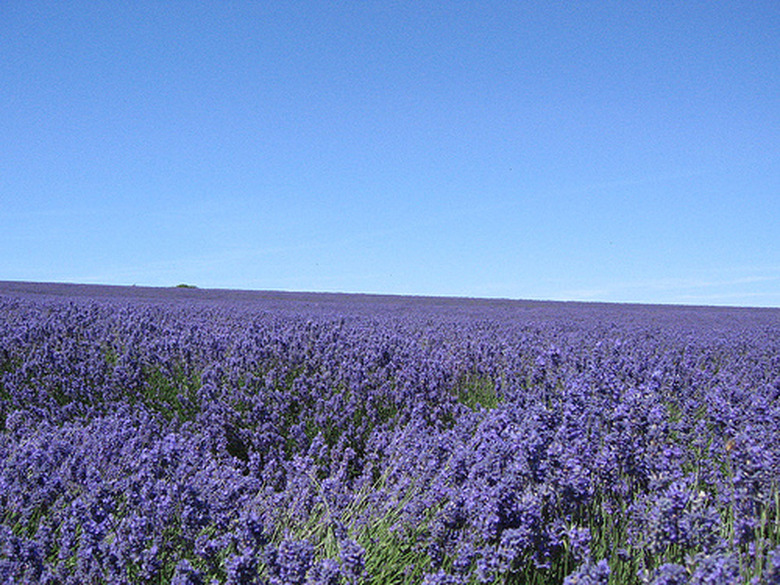How To Care For Lavender Plants In The Winter
Winter care for lavender plants is very simple and straightforward, centering almost entirely on protecting the plants' roots from both cold temperatures and winds and the attendant drought that comes with them. Late fall preparation for winter ensures healthy lavender plants come spring.
Step 1
Refrain from pruning or mowing down dying lavender foliage and flowers at the end of the season in the fall. The dying foliage will serve as part of a blanket and mulching system to protect the plants over the winter and allow them to awaken in the spring and perform without delay or injury. In the spring after the last frost has passed, cut away the dead plant material, making room for the new growth.
Step 2
Water the lavender plants deeply one last time before the first killing frost of fall to help reduce the coming drought stress of winter and prepare for spring growth.
Step 3
Add a thick blanket layer of mulch over the lavender plants that is at least 2 inches deep. Use an organic material such as straw, shredded bark, evergreen boughs, leaf mold, cocoa hulls or compost or some combination of the above for a well-insulated and moisture-holding cover.
- Winter care for lavender plants is very simple and straightforward, centering almost entirely on protecting the plants' roots from both cold temperatures and winds and the attendant drought that comes with them.
- The dying foliage will serve as part of a blanket and mulching system to protect the plants over the winter and allow them to awaken in the spring and perform without delay or injury.
Winter Care For Lavender Plants
If you grow lavender (Lavandula spp.) Then harvest stems for their fragrant foliage and flowers from late spring through the midsummer months, but stop harvesting in late August or early September. Once harvesting is done, you can leave the plant uncut for the winter. But if you experience heavy winter snow, you can minimize snow damage by shearing the plants into mounds in late summer, provided you only cut back younger stems and avoid cutting into old wood, because this promotes tender young growth that's easily damaged by cold. The boughs shade the plants and prevent heaving of the plants out of the ground during freeze-thaw cycles. If you live within their outdoor growing range, sink the pot into the ground near a warm building wall, with soil at the same level as in the pot. Avoid any winter pruning, reserving this for the following spring. You can also take a potted lavender indoors for the winter, keeping it in a sunny window, but water it lightly only every week or two while it's resting.
- If you grow lavender (Lavandula spp.) Once harvesting is done, you can leave the plant uncut for the winter.
- But if you experience heavy winter snow, you can minimize snow damage by shearing the plants into mounds in late summer, provided you only cut back younger stems and avoid cutting into old wood, because this promotes tender young growth that's easily damaged by cold.
Things Needed
- Secateurs or shears
- Organic mulch
References
- Lavender care from White Flower Farm
- Penn State University Horticulture Department
- Missouri Botanical Garden: Genus — Lavandula
- White Flower Farm: Growing Lavender
- Bonnie Plants: Growing Lavender
- Lockwood Lavender Farm: Preparing Lavender for the Winter Montths
- PennLive: Overwintering Potted Lavender
